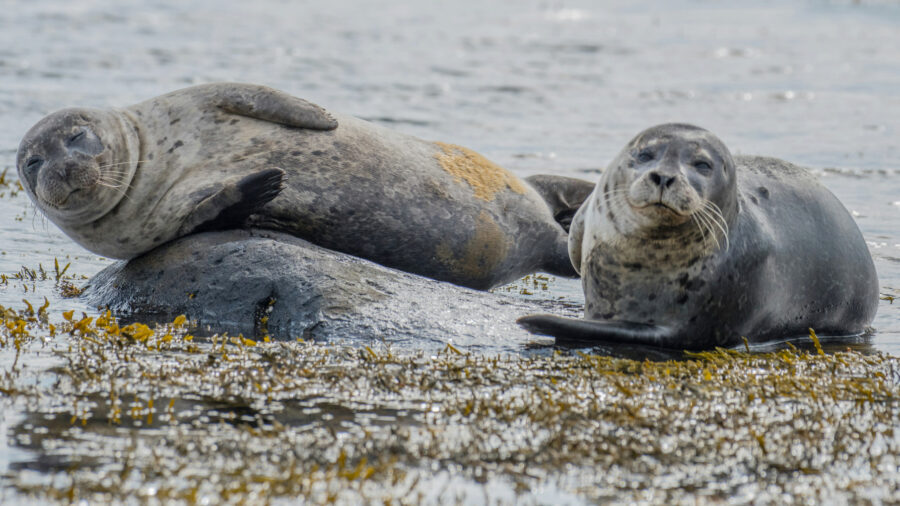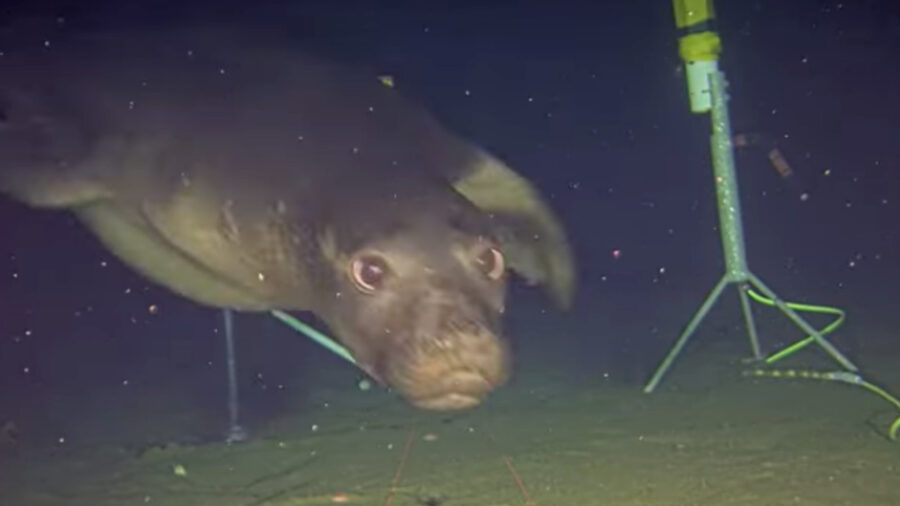Seals Use Research Camera As Meal Ticket

Scientists studying sea life off the coast of Canada got a surprise when they noticed that their camera was attracting northern elephant seals who were recognizing their sonar signals as an easy meal ticket. These smart pinnipeds had figured out that the research camera was sending out signals that attracted some of their favorite food sources. The camera that was submerged about 2,000 feet deep in an area of the deep sea called Barkley Canyon, where researchers used acoustics to attract fish on the deep seafloor, ended up attracting eight seals looking for a bite to eat.
Take a look at the footage of these seals in action:
The research that was being conducted involved using sound to attract fish and deep-sea invertebrates to study the effect of light and bait on local wildlife. Dubbed the Fish Acoustics Attraction Experiment, the study involved using sonar imaging and an HD camera to observe the wildlife at a depth of 645 meters or 2,116 feet, and ended up surprising scientists by capturing eight seals in their images. Scientists theorized that they were using the sonar signals from the experiment to locate a food source.
While it’s not certain why the scientists named them after the Beach Boys, Brian, Dennis, Carl, Mike, Al, David, Blondie, and Bruce, did get pretty good at picking up good vibrations.
Using sound to attract fish ended up attracting the seals when they figured out that the fish would flock to the camera. The sound doesn’t attract the seals, but the presence of food causes them to follow the sonar pulses that the camera puts out. This behavior is referred to by scientists as the “dinner bell effect” because the seals learn to associate the sonar pulse with the presence of plentiful fish to feed on.
This breakthrough in seal observation was accidental, as their presence was noticed during the viewing of the tapes while looking for fish and invertebrates.
The eight seals that surprised the researchers became familiar to the team and were named after the Beach Boys. While it’s not certain why the scientists named them after the band members, Brian, Dennis, Carl, Mike, Al, David, Blondie, and Bruce, did get pretty good at picking up good vibrations. The names were practical as well as fun because the research team used them to differentiate between the seals when recording the frequency of their visits to the deep-sea camera.

113 visits from the seals were observed in video recordings and 210 visits were recorded via sonar detection. During their visits, the seals seemed to be mostly there to feed and didn’t stick around after they had caught their prey. The seals seemed to be attracted to crabs, sablefish, and hagfish, among other food sources.
Northern elephant seals were surprise visitors to the Barkley Canyon research site, as they have proven to be elusive in the past. The study was the first to capture the seals in deep water and researchers were able to gain insight into their behavior for the first time. This breakthrough in seal observation was accidental, as their presence was noticed during the viewing of the tapes while looking for fish and invertebrates.
The camera that was submerged about 2,000 feet deep in an area of the deep sea called Barkley Canyon, where researchers used acoustics to attract fish on the deep seafloor, ended up attracting seals looking for a bite to eat.
Scientists adapted some of the equipment intended for fish observation to detect and record the behavior of the seals once the researchers discovered their frequent and unanticipated presence. The experiment was able to produce results depicting the behavior of the seals as well as the intended subjects of the study. With such promising results, this study can make future deep ocean observation more feasible.
Source: Plos One












